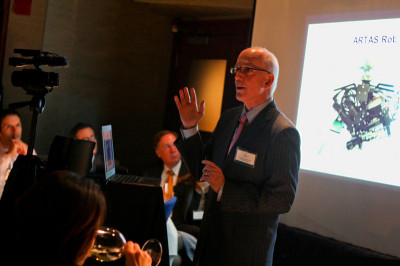 Dr. Bernstein is credited with introducing the “follicular unit” to surgical hair restoration, the innovation that allowed for a “completely natural-looking hair transplant” to be achieved. The commentary on Dr. Bernstein’s contributions to the field of hair transplantation are outlined in an historical review of dermatologic surgery that appeared in the Journal of the American Academy of Dermatology.
Dr. Bernstein is credited with introducing the “follicular unit” to surgical hair restoration, the innovation that allowed for a “completely natural-looking hair transplant” to be achieved. The commentary on Dr. Bernstein’s contributions to the field of hair transplantation are outlined in an historical review of dermatologic surgery that appeared in the Journal of the American Academy of Dermatology.
Dr. Bernstein is noted as being responsible for moving the field of hair restoration surgery away from large graft “plugs” and mini-micrografts to follicular units:
The following year, dermatologists Bernstein et al laid down the conceptual framework for follicular unit transplantation in their 1995 article, “Follicular transplantation.” In 1997, they detailed its clinical application in the paired articles, “Follicular transplantation: patient evaluation and surgical planning” and “The aesthetics of follicular transplantation.”
The 2 advances, the application of the stereomicroscope to follicular dissection and the use of follicular units as the basic element of hair transplantation, arose from a background in dermatology. They moved the field of hair restoration surgery from plugs and mini-micrografting, where this basic anatomical feature of the hair follicle was ignored, to follicular unit transplantation, where the follicular unit became sacrosanct. These 2 ideas, when put to clinical use, allowed the once elusive goal of a completely natural-looking hair transplant to finally be achieved.
Dr. Bernstein’s pioneering of the Follicular Unit Transplant (FUT) procedure still resonates, almost two decades later, as the follicular unit continues to be the anatomical structure that is transplanted in hair transplant surgeries worldwide.
The article then describes how Dr. Bernstein, along with his colleague Dr. Rassman, laid the foundation for the next major developments in hair restoration; first with his description of the Follicular Unit Extraction (FUE) technique and more recently with innovation in robotic hair restoration technology.
With the publication of the article, “Follicular unit extraction,” in 2002, the follicular unit extraction procedure gained popular appeal and was rapidly adopted by doctors worldwide. The authors cautioned on the limitations of this harvesting technique and the risk of follicular damage. Dermatologists Berman, Zering, and Bernstein, along with their colleagues in other specialties, continue to work on the problem of harvesting in follicular unit extraction, with the application of robotic technology showing particular promise.”
Taken together, these passages underscore how Dr. Bernstein’s research and medical publications have fundamentally transformed the field of hair restoration to the benefit of patients and physicians alike. While many other very talented physicians have had a substantial impact on hair restoration procedures ever since the hair transplant concept was first proposed by Dr. Norman Orentreich in the 1950s, Dr. Bernstein has contributed the key innovations that have made modern, natural-looking hair transplant surgery a medical and aesthetic possibility.
The article is titled, “Current status of surgery in dermatology.” The Journal of the American Academy of Dermatology is the official journal of The American Academy of Dermatology (AAD), the largest, most influential and most representative dermatology group in the United States.
Reference
C. William Hanke, Ronald L. Moy, Randall K. Roenigk, Henry H. Roenigk Jr., James M. Spencer, Emily P. Tierney, Cynthia L. Bartus, Robert M. Bernstein, Marc D. Brown, Mariano Busso, Alastair Carruthers, Jean Carruthers, Omar A. Ibrahimi, Arielle N.B. Kauvar, Kathryn M. Kent, Nils Krueger, Marina Landau, Aimee L. Leonard, Stephen H. Mandy, Thomas E. Rohrer, Neil S. Sadick, Luitgard G. Wiest, Current status of surgery in dermatology, Journal of the American Academy of Dermatology, Volume 69, Issue 6, December 2013, Pages 972-1001, ISSN 0190-9622, http://dx.doi.org/10.1016/j.jaad.2013.04.067.
Read more about Dr. Bernstein’s history of innovation in hair transplant surgery
Read Dr. Bernstein’s landmark medical publications
Download and read ‘Current status of surgery in dermatology’ (pdf)
Posted by








